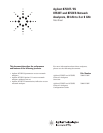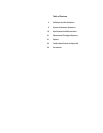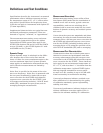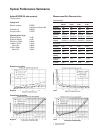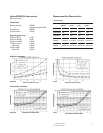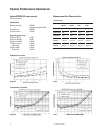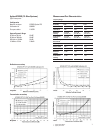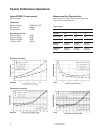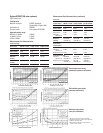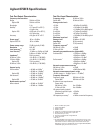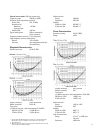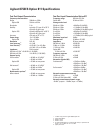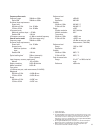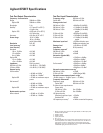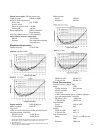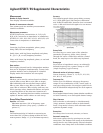
3
Specifications describe the instrument’s warranted
performance after a half-hour warm-up and over
the temperature range of 25° ± 5° C, unless other-
wise stated. Specifications for frequencies above
3 GHz do not apply to instruments with Option 075
(75-ohm impedance).
Supplemental characteristics are typical but non-
warranted performance parameters. These are
denoted as “typical,” “nominal,” or “approximate.”
The measurement uncertainty curves and meas-
urement port characteristics given for Agilent
Technologies 8753ES systems also apply to the
8753ES with Options 006 and 011 and the 85047A
test set (50-ohm), or the 8753ES Option 011 with
an 85046B test set (75-ohm).
Dynamic Range
System dynamic range is calculated as the differ-
ence between the receiver noise floor and the
lesser of either the source maximum output or the
receiver maximum input level. System dynamic
range applies to transmission measurements only,
since reflection measurements are limited by
directivity.
Noise floor is specified as the mean of the noise
trace over frequency. Noise floor is measured with
the test ports terminated in loads, full two-port
error correction for the 8753ES and enhanced-
response error correction for the 8753ET (with
16 averages used during isolation), 10 Hz IF band-
width (BW), maximum test port power, and no
averaging during the measurement.
Measurement Uncertainty
Measurement uncertainty curves utilize a Root
Sum Square (RSS) model for the contribution of
random errors such as noise, typical connector
repeatabilities, and test set switching; this is
combined with a worst-case model for the contri-
butions of dynamic accuracy and residual system-
atic errors.
Curves show the worst-case magnitude and phase
uncertainty for reflection and transmission meas-
urements, after a full two-port error correction for
the 8753ES and enhanced-response error correc-
tion for the 8753ET (including isolation with an
averaging factor of 16) using the specified cal kit,
with 10 Hz IF bandwidth (BW) and no averaging.
Measurement Port Characteristics
Characteristics show the residual system uncer-
tainties for uncorrected performance and after
accuracy enhancement using full two-port error
correction for the 8753ES and enhanced-response
error correction for the 8753ET. These character-
istics apply for an environmental temperature of
25° ± 5° C, with less than 1° C deviation from the
calibration temperature. Agilent 8753ET Option
004 may degrade transmission source match
as much as 2 dB, resulting in up to 0.05 dB addi-
tional uncertainty in transmission tracking.
Corrected performance indicates residual error
after calibration. It is determined by the quality
of calibration standards, system repeatability,
stability, and noise.
Uncorrected performance indicates intrinsic errors
without calibration correction applied. This is
related to the ultimate stability of a calibration.
Definitions and Test Conditions



